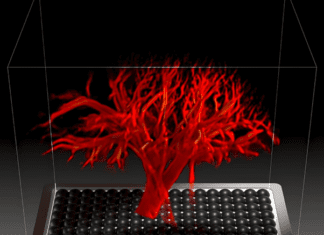This post is also available in:
 עברית (Hebrew)
עברית (Hebrew)
Australian researchers from the University of Sydney and the Sydney Nano Institute have achieved a step forward in solar energy technology with a high-performance tandem solar cell that combines perovskite and silicon materials. The new design sets records in both efficiency and durability, marking a milestone for scalable, next-generation solar cells.
The device is a triple-junction tandem solar cell, meaning it uses three stacked semiconductor layers—two made of perovskite and one of silicon—each absorbing different parts of the solar spectrum. This configuration enables greater energy conversion than standard silicon-only cells, which are limited in their ability to capture certain ranges of light.
According to TechXplore, the research team achieved a certified power conversion efficiency (PCE) of 23.3% on a large-area cell (16 square meters), which is a record for this type of device at that scale. On a smaller scale, the team reached 27.06% efficiency. Alongside these performance results, the cell also demonstrated high thermal and operational stability.
A key innovation was the replacement of traditional materials known for instability. The team substituted methylammonium with rubidium, creating a stronger perovskite crystal structure. For surface treatment, they used piperazinium dichloride instead of lithium fluoride to improve resilience. Additionally, nanoscale gold particles were used between layers to enhance electrical conductivity and light transmission. Contrary to earlier assumptions, these gold particles do not form a continuous film but instead exist as discrete nanoparticles; a discovery that allowed for more precise engineering of their application.
In testing, the solar cell endured 200 thermal cycles ranging from –40°C to 85°C, maintaining 95% of its initial efficiency. It also remained stable after more than 400 hours of continuous light exposure.
These results suggest the new design could pave the way for more efficient, long-lasting solar energy suited to real-world conditions. This approach could help reduce the cost of high-efficiency solar technology and support the transition to lower-carbon energy sources.
The research was published in the “Nano Technology” journal.


























